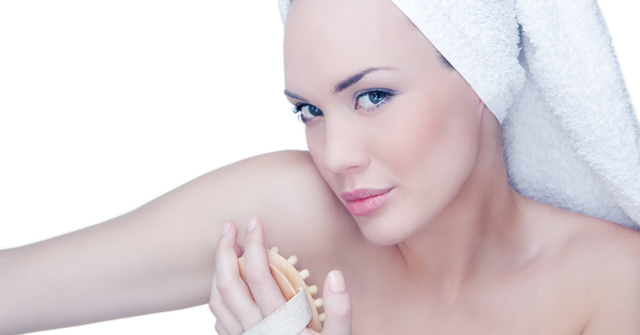Exfoliating Dos and Don’ts

Body exfoliation is the perfect way to give the skin a new and fresh glow whilst helping to reduce breakouts and the formation of dry skin. Exfoliation is the removal of dead skin cells collected on the uppermost layer of the skin so that newer and fresher skin cells reap out. Although the process of exfoliation is a natural process, it occurs less frequently as we age, which leaves an uneven pile-up of dead cells over the body. Without exfoliating the skin becomes dull and congested, and blemishes begin to appear. This makes body exfoliation a key ingredient in improving the tone of the skin, which then enables moisturizers, suntan solutions, and anti-aging products to be effective.
Body exfoliation is done with the help of loofahs, pumice stones, exfoliating mitts, exfoliating cleansers, scrubs, or body brushes. However, there are several ways of exfoliating the skin properly and with care. Here is a guide on the do’s and don’ts of exfoliation:
– Don’t overdo it! Keep a gentle hand and exfoliate in moderation, such as twice a week.
– Don’t use a scrub that has harsh or scratchy particles in it. Exfoliate your skin with a scrub or exfoliation cleanser that has small and spherical particles.
– Don’t exfoliate your lips. Your lips have a thinner and more sensitive layer of skin that is naturally smooth. Exfoliating the lips will only damage the area of the skin. Apply only sunscreens, moisturizers and lip balms.
– Don’t exfoliate your scalp. The hair keeps the scalp covered which makes it nonessential to exfoliate the scalp regularly. Instead, use a glycogenic acid shampoo if you have dandruff or oily hair.
– Don’t exfoliate your skin before cleansing. This is because it will only remove the makeup or dirt gathering on the skin’s surface. This still leaves the dead skins cells, which will then block the pores and make the skin appear dull and dry.
– Don’t use any exfoliating gel or cleanser with a loofah as that will overdo the exfoliation process.
– Don’t use a glycolic acid, retinol, or AHA based moisturizer after using a cleansing scrub.
– Do exfoliate dry skin. Parched skin requires exfoliation as the dried dead skin cells accumulate over the skin and prevents water from absorbing into the skin. Always apply a strong moisturizer to help lock in hydration after body exfoliation.
– Do use a pumice stone on thick skin like the toes, elbows, and soles of the feet.
– Do use a loofah on thinner areas of the skin, such as the arms and legs.
– Do wear a sunscreen after exfoliating as the skin’s protective layer has been removed and your skin is the most sensitive at that point.
– Do clean your loofahs or exfoliating utensils with water after usage.
– Do replace your loofah on average every 2 weeks after the first use.


